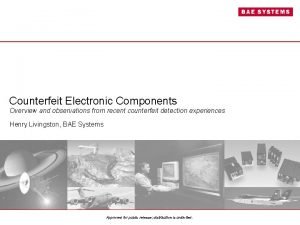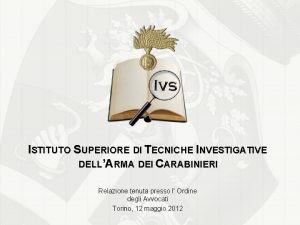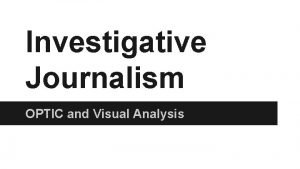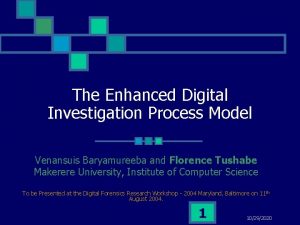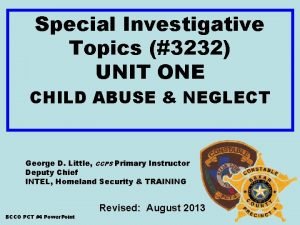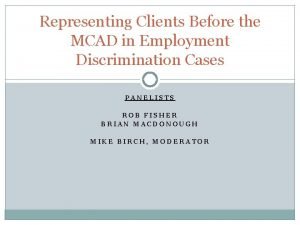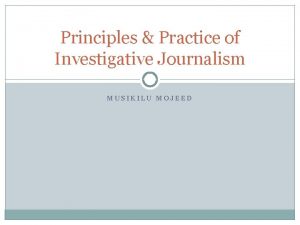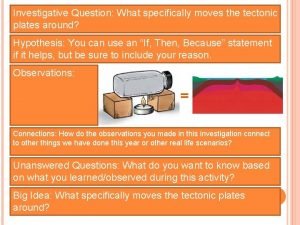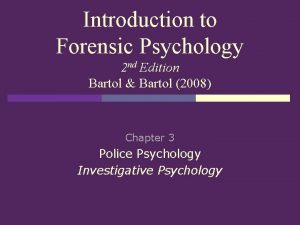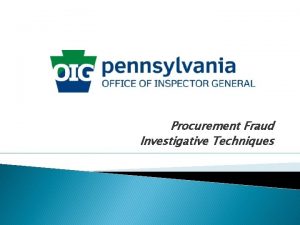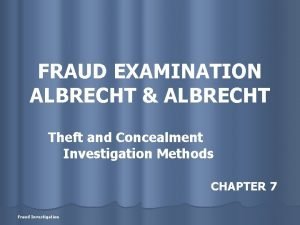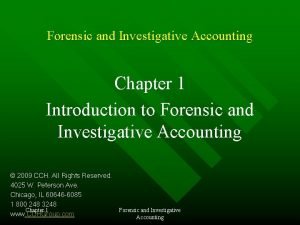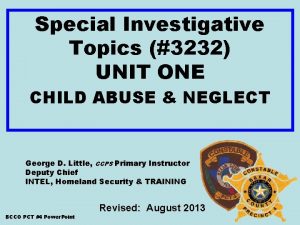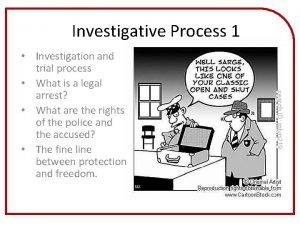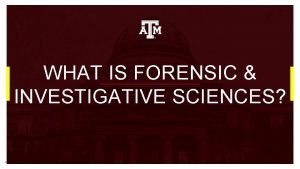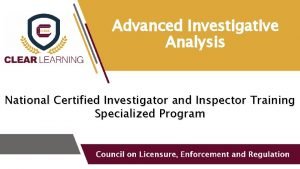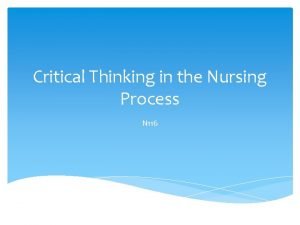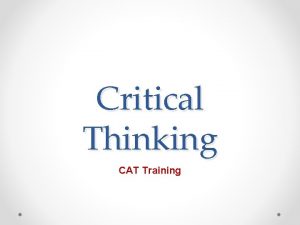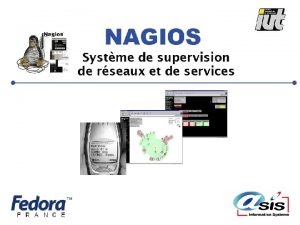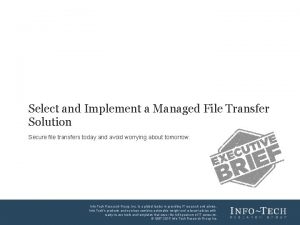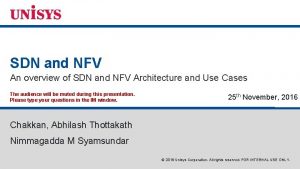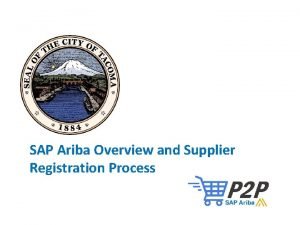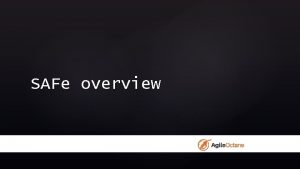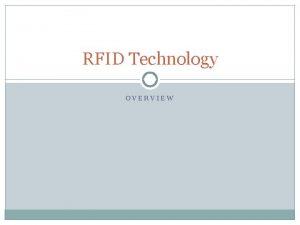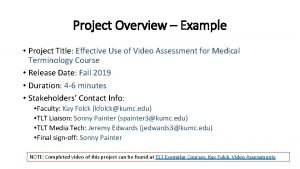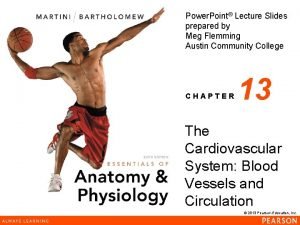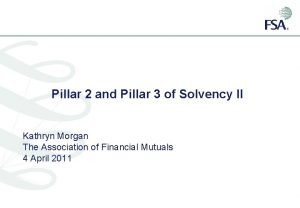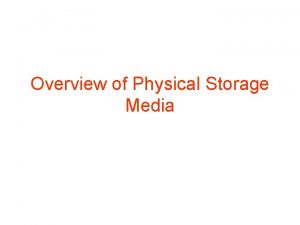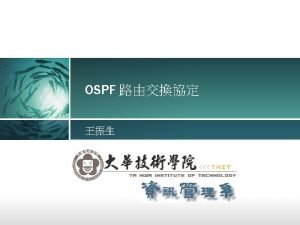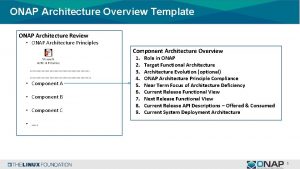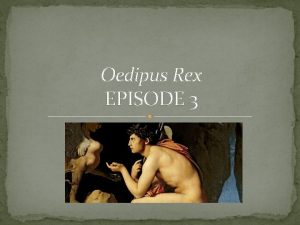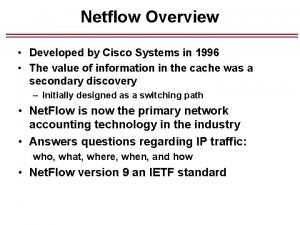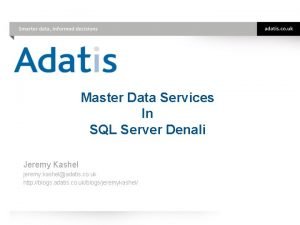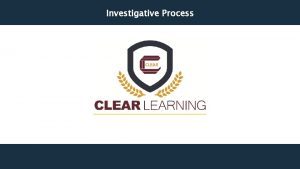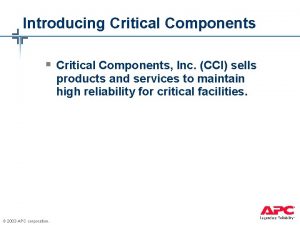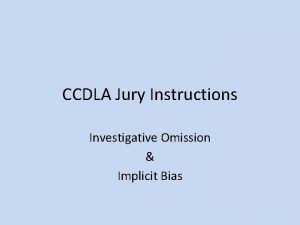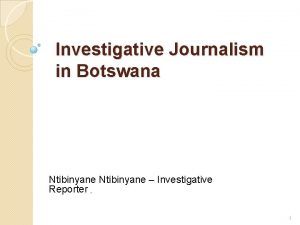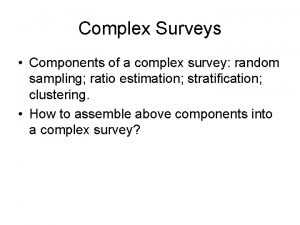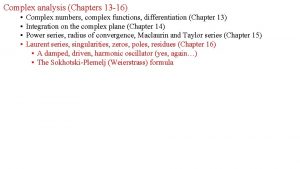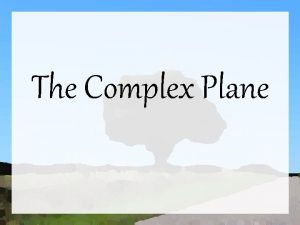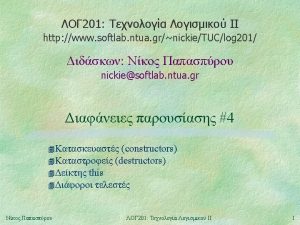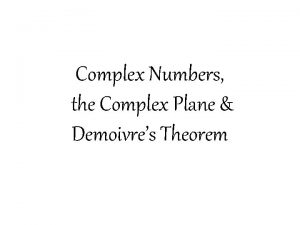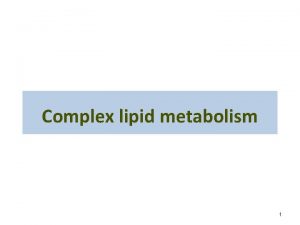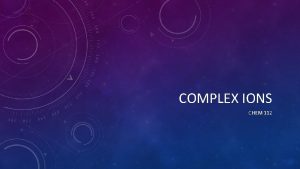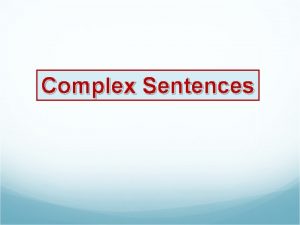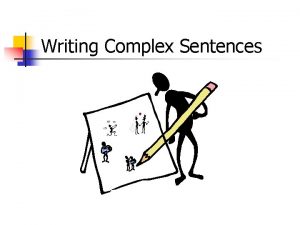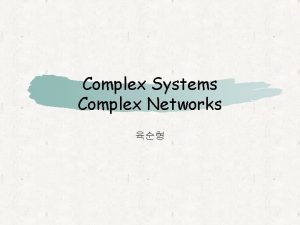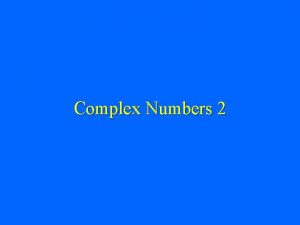Complex Prosecutions An investigative overview of critical components








































































- Slides: 72

Complex Prosecutions An investigative overview of critical components necessary to assist in the investigative process and prosecution associated with cold case, multi -victims homicide and no body prosecutions

Thomas F. Biesty Retired Assistant State’s Attorney Cook County • 26 years as ASA in Cook County, IL • 15 years as Supervisor of the Cold Case Homicide Unit • Instructor for numerous Law Enforcement training seminars including the Illinois Homicide Investigators Association

Ground Rules n n Do not hold back any questions at any time Challenge anything you do not agree with Share your own insights, thoughts, experiences with the group Give me a question you want answered today

Investigative Plan • Goals of investigation • Potential investigative techniques and the advantages and disadvantages of each • The legal issues likely to arise during the investigation • The importance of timely communications between the members of the investigative team

Homicide Checklist • Was this case classified as a homicide? • Was the victim’s body located?

• Are there police reports? • Were are they and what condition. • Are the original detectives' available?

• • Are there witness to the homicide? Were they interviewed? Are they available? Did they go before a Grand Jury or Coroner’s Inquest? • Are the transcripts available?

• Is the evidence available? • Was a crime laboratory analysis performed? • Was all the evidence related to the case analyzed?

Is the evidence viable for current scientific examination ?

SNAPSHOT DNA

FAMILIAL DNA

• CAN WE DOCUMENT THE CHAIN OF CUSTODY ?

• The Crime Scene • Are crime scene photos or video available? • Are original diagrams of a crime scene available? • Has the crime scene changed?

Calendars • Prepare a calendar of both the month and year. • Allows you to picture events as they unfolded • Aids witness recall.

Tips and Clues • Jailhouse informants • 3 rd party statements (e. g. girlfriends, exwives) • DNA • Co-defendants • Anonymous tips

Cook County Jail

Jail House Informants Case

Proving Jail Intelligence • • Existence of the crime the inmate is referring to Background of this inmate Understanding de-confliction Establishing how this inmate received the information • Establishing where this inmate received the information • Establishment of why he or she is initiating this

Jail Intelligence: Additional Considerations • What means did this inmate use to communicate this information • What is the venue for prosecution of this inmate’s offense • Is he currently represented by counsel • Understand attorney client issues • What is the motive

Proving Jail Intelligence: Final Points • Is this inmate providing information on a person currently in custody in this or another facility • Discussion of related issues • Are the events provided consistent with physical and electronic evidence affiliated with the event • Understanding protective custody • Issues on DOC interview/ interrogations

Cooperating Individuals

The C/I • Confidential Informant • “Snitch” • Cooperating Individual • A person who provides you information or services in exchange for a benefit

What is an Informant • Active unpaid Informants • Paid Informants • Defendant Informants • In-custody Informants

In-Custody Informants • Inmate • Provides information or testimony • Matters learned while in custody • Dispositional or sentencing benefits

What is a Benefit • Any consideration or advantage • Offered, promised or received • In exchange for information or services

Benefits (cont. ) • Relocation of informant or informant’s family • Immunity • Intervention n n Favorable action with other government agencies INS, IRS, CPS, employers, etc.

Types of Benefits • Financial n Monetary payments of any kind • Custody n n Leniency in arrest or booking Leniency in setting bail • Charging n Leniency in filing charges or enhancements

State of the Law

Legal Source of C/I Issues • “We now hold that the suppression by the prosecution of evidence favorable to an accused upon request violates due process where the evidence is material either to guilt or to punishment, irrespective of the good or bad faith of the prosecution” n Brady v. Maryland, 373 US 83, 87 (1963)

“Brady-esque” Material • Exonerates the defendant • Impeaches prosecution witness • Reduces the degree of guilt or • Mitigates the degree of punishment

Kyles v. Whitley Rule 514 U. S. 419 (1995) • The prosecution has an obligation to discover and disclose “Brady Material” • All governmental knowledge regarding information that exculpates defendant, or impeaches the prosecution’s case, even information in exclusive police control

Kyles v. Whitley Rule 514 U. S. 419 (1995) (cont. ) • . . . the individual prosecutor has a duty to learn of any favorable evidence known to the others acting on the government's behalf in the case, including the police” (at p. 437)

Giglio Rule • Prosecutors must establish procedures to locate, maintain and communicate all “Brady-esque” Material • (405 U. S. 150, 154) n i s ’ t a h W ! ! ? e r e h t

Anything Bearing on Credibility • “When the ‘reliability of a given witness may well be determinative of guilt or innocence, ’ nondisclosure of evidence affecting credibility falls within this general rule [i. e. , Brady v. Maryland]” • Giglio v. U. S. 405 U. S. 150, 154 (1972), citing Napue v. Illinois 360 U. S. 264 (1959)

Plea Agreement

Structure of the Agreement • Include cooperation in preparation for trials and motions • Require them to cooperate with interviews so they can not refuse to assist in case preparations • Include testifying at hearings, trial and any retrial should there by a hung jury or reversal after appeal • Include that there are no other agreements (e. g. , with police or anyone else)

Perkins Operations

• What is a COH?

Consensual Overhears (COH’s) • Allow for law enforcement to use a judicially approved eavesdropping device, with the consent of at least one of the parties privy to a conversation. • This is done where there is probable cause to believe that a recording of the conversation will yield evidence that a crime has been committed, is being committed, or will be committed.

Is a COH the same as a wiretap?

No. • • Illinois is a one party consent state. This means that in order to lawfully record conversations, law enforcement must have: – • COH is not the same as WIRETAP. the consent of one of the parties to the conversation. What we think of as wiretaps are covered by 725 ILSC 5/108 B. – – – This is electronic surveillance that allows law enforcement to listen in on telephone conversations or place recording devices in a target’s home or business without the consent of any party to the conversations. 108 B surveillance usually encompasses a need for much more probable cause than a COH, as well as more manpower to conduct. A 108 B wiretap is most commonly used during longer-term investigations, and is a tool of last resort.

When do I have to tell people I surreptitiously recorded their conversations?

PREPARATION OF C/I Tell C/I he is NOT the star of the show • Let the target • bury himself Avoid entrapment 80/20% ratio

Benefits of C. O. H. Ø Ø Ø Silence is sometimes incriminating Eliminates police coercion argument Jury can hear Deft. in his natural setting Juries prefer video/audio to plain testimony Memories fade over time- tapes last forever NO HARM--NO FOUL (exculpatory statements by the defendant are inadmissible at trial)

So you have a tape • Can you hear the tape? • You need to create a transcript

Getting Tapes into Evidence • Did you need to get them enhanced? • Audio compression which is turning up the quieter or turning down the louder sounds. • If so, need to get a stipulation or put the witness on stand. • See Gary Cobb example

What tapes to use • Only use the relevant conversations • But have all the tapes admitted

• A foundation for admission of sound recording is a party to the conversation OR a person who heard the conversation while it was taking place identifies the voices of the people in the conversation while it was taking place and testifies that the tape accurately portrays the conversation.

TRANSCRIPTS • It is proper for a trial court to permit the jury to use written transcripts of recorded conversations in order to assist them in listen to those conversations

TRANSCRIPTS I. P. I. Criminal No. 3. 20 A tape-recording has been admitted into evidence. In addition to the tape-recording you are being given a transcript of the taperecording. The transcript only represents what the transcriber believes was said on the tape, and merely serves as an aid when you listen to the tape. The tape and not the transcript is the evidence. If you perceive a conflict between the tape and the transcript, the tape controls.

FOUNDATION • Were transcripts of the recorder conversations in Exhibit 1 A prepared for court? • Did you have an opportunity to review those transcripts and participate in the preparation of them? • Are the transcripts in Exhibit 1 C true and accurate depictions of the recorded conversations in Exhibit 1 A

Why you need to understand Electronic Surveillance

Statistics • 90% of Americans adults have a cell phone • 58% of Americans have a smartphone • Facebook users share approximately 684, 478 pieces of content every minute, and the average user creates 90 pieces of content(evidence) each month • Each day 1, 000 accounts are added to Twitter

CALIFORNIA ELECTRONIC COMMUNICATION PRIVACY ACT January 1 st 2016 Requires notification MUST be provided when any government entity executes a search warrant that includes the production of or access to electronic communication or device information Provision for both Emergency and Delayed order

Chief Justice Roberts • “(modern cell phones) are now such a pervasive and insistent part of daily life that the proverbial visitor from Mars might conclude they were an important feature of human anatomy. ” • Riley v. California, 134 S. Ct 2473, 2484 (2014)

• New defense attacks on cell phone search warrants is the “any and all data” • Several courts are pushing for exact locations and limits on were in the phone you can search. i. e. text messages or videos. • Remember United State’s v. Leon.

OTHER TYPES OF TRACKING

Third Party Doctrine


4 th AMENDMENT ISSUES

5 th and 6 th Amendment issues

Homicide Case Example

Pretrial Considerations • Preliminary hearing or Grand Jury indictment • Defending against the usual • Discovery • Organize and bring your case into the 21 st century.

Pretrial Considerations • Protect your witness • Unique witness problems

Pretrial Considerations • Motions in limine • Proof of other crimes

Jury Selection • Do you need a questionnaire? • Must understand Juror mindset • Voir dire (Remember Body Language) • What do juror’s answers mean?

Trial • Opening Statement • Presentation of the evidence • Jury instructions

Defense Case • Make sure to serve defense investigator with subpoena for notes and reports. • Check with your experts about defense experts. • Once you know defense experts, get their books, and anything they relied upon.

Closing Argument • JURY INSTRUCTIONS. You need the law from the time of the offense.

Second Proposition: That when the defendant, or one for whose conduct he is legally responsible, did so, he intended to kill or do great bodily harm to Richard Ehlenfeldt or another; or he knew that his acts would cause death to Richard Ehlenfeldt or another; or he knew that his acts created a strong probability of death or great bodily harm to Richard Ehlenfeldt or another; or he was committing the offense of armed robbery.

Closing Argument • Use the photos of the victims and defendant.

Future Contact Information • Any questions? • Tom Biesty • tombiesty@sbcglobal. net
 Critical semi critical and non critical instruments
Critical semi critical and non critical instruments Semi critical
Semi critical Counterfeit electronic components an overview
Counterfeit electronic components an overview Istituto superiore di tecniche investigative
Istituto superiore di tecniche investigative Visual investigative analysis
Visual investigative analysis Challenges of investigative reporting in kenya
Challenges of investigative reporting in kenya Abstract digital forensics model
Abstract digital forensics model Special investigative topics 3232 answers
Special investigative topics 3232 answers Mcad investigative conference
Mcad investigative conference Principles of investigative journalism
Principles of investigative journalism Questions about tectonic plates
Questions about tectonic plates Investigative psychology definition
Investigative psychology definition Lamarck theory
Lamarck theory Sds john holland
Sds john holland Special investigative techniques
Special investigative techniques Fraud examination albrecht
Fraud examination albrecht Forensic and investigative accounting
Forensic and investigative accounting Artistic social enterprising
Artistic social enterprising Special investigative topics 3232
Special investigative topics 3232 Investigative process
Investigative process Investigative sciences
Investigative sciences Bottleneck effect
Bottleneck effect Balkan investigative reporting network
Balkan investigative reporting network Balkan investigative reporting network
Balkan investigative reporting network Slidetodoc.com
Slidetodoc.com Bruno dislikes sitting on the beach
Bruno dislikes sitting on the beach Ghon complex and ranke complex
Ghon complex and ranke complex Simple compound complex quiz
Simple compound complex quiz Freud complexes
Freud complexes Carly's therapist asks her to simply
Carly's therapist asks her to simply Sublimation psychology
Sublimation psychology 5 components of critical thinking
5 components of critical thinking 5 components of critical thinking
5 components of critical thinking 5 components of critical thinking
5 components of critical thinking Www description
Www description Maximo work order priority
Maximo work order priority Universal modelling language
Universal modelling language In uml is a connection among things
In uml is a connection among things Vertical overview
Vertical overview Figure 12-1 provides an overview of the lymphatic vessels
Figure 12-1 provides an overview of the lymphatic vessels Pulmonary circulation
Pulmonary circulation Texas public school finance overview
Texas public school finance overview Walmart company profile
Walmart company profile Stylistic overview of philippine art
Stylistic overview of philippine art Overview of sa/sd methodology
Overview of sa/sd methodology Spring framework overview
Spring framework overview Nagios tactical overview
Nagios tactical overview Market overview managed file transfer solutions
Market overview managed file transfer solutions Sdn nfv overview
Sdn nfv overview Sbic program
Sbic program Sap mm overview
Sap mm overview Ariba registration process
Ariba registration process Safe overview
Safe overview Rfid technology overview
Rfid technology overview Review paper introduction
Review paper introduction Virusmax
Virusmax Project description
Project description Blood supply of stomach flowchart
Blood supply of stomach flowchart Abstract overview
Abstract overview Solvency ii pillar 3
Solvency ii pillar 3 Physical storage devices
Physical storage devices Overview of education in health care
Overview of education in health care Overview funding programmes
Overview funding programmes Ospf overview
Ospf overview Onap architecture overview
Onap architecture overview Sophocles oedipus the king summary
Sophocles oedipus the king summary Netflow overview
Netflow overview Health tb
Health tb Mpls overview
Mpls overview Azure blob storage price
Azure blob storage price Master data services overview
Master data services overview Overview of cellular respiration
Overview of cellular respiration Overview of aerobic respiration
Overview of aerobic respiration


